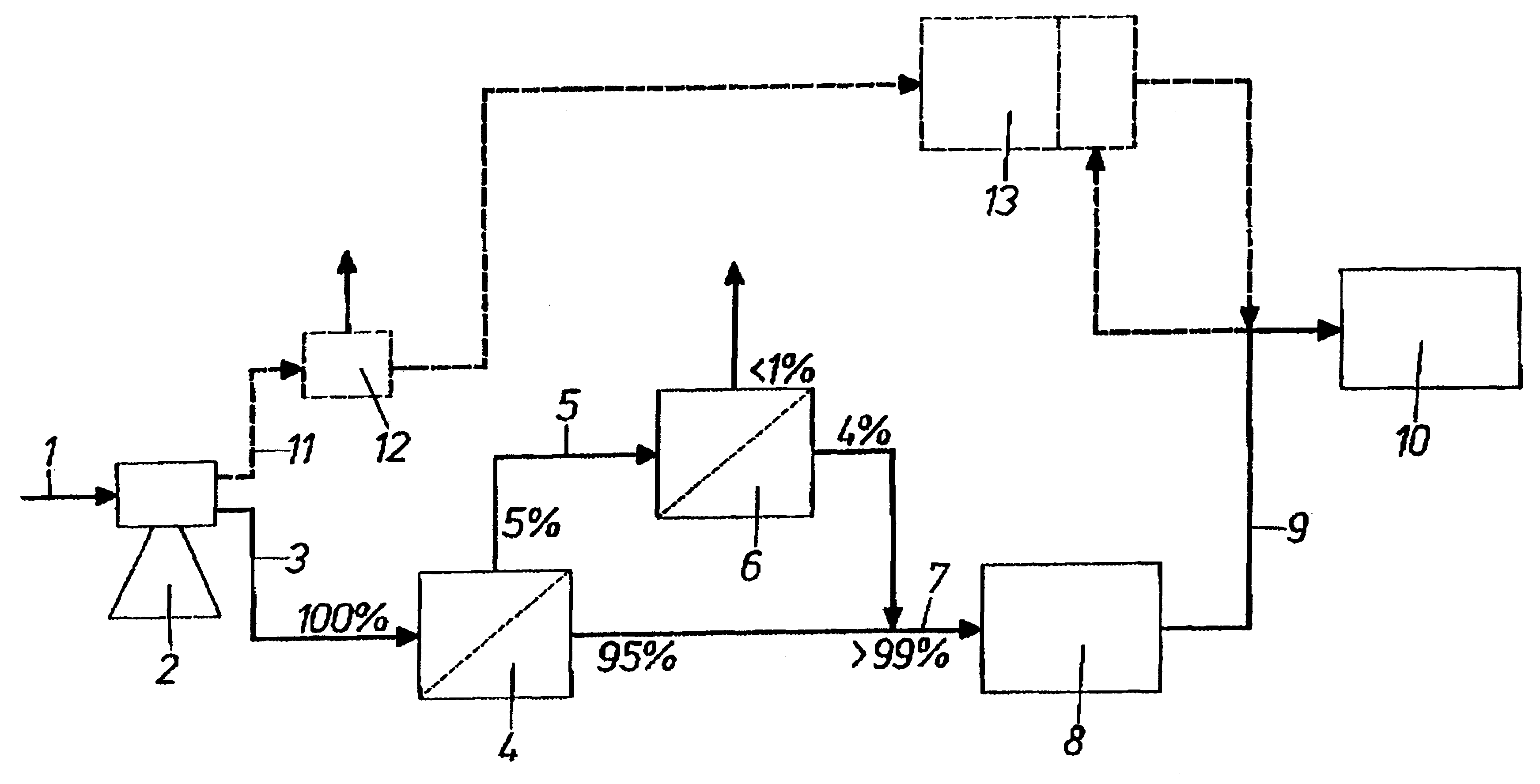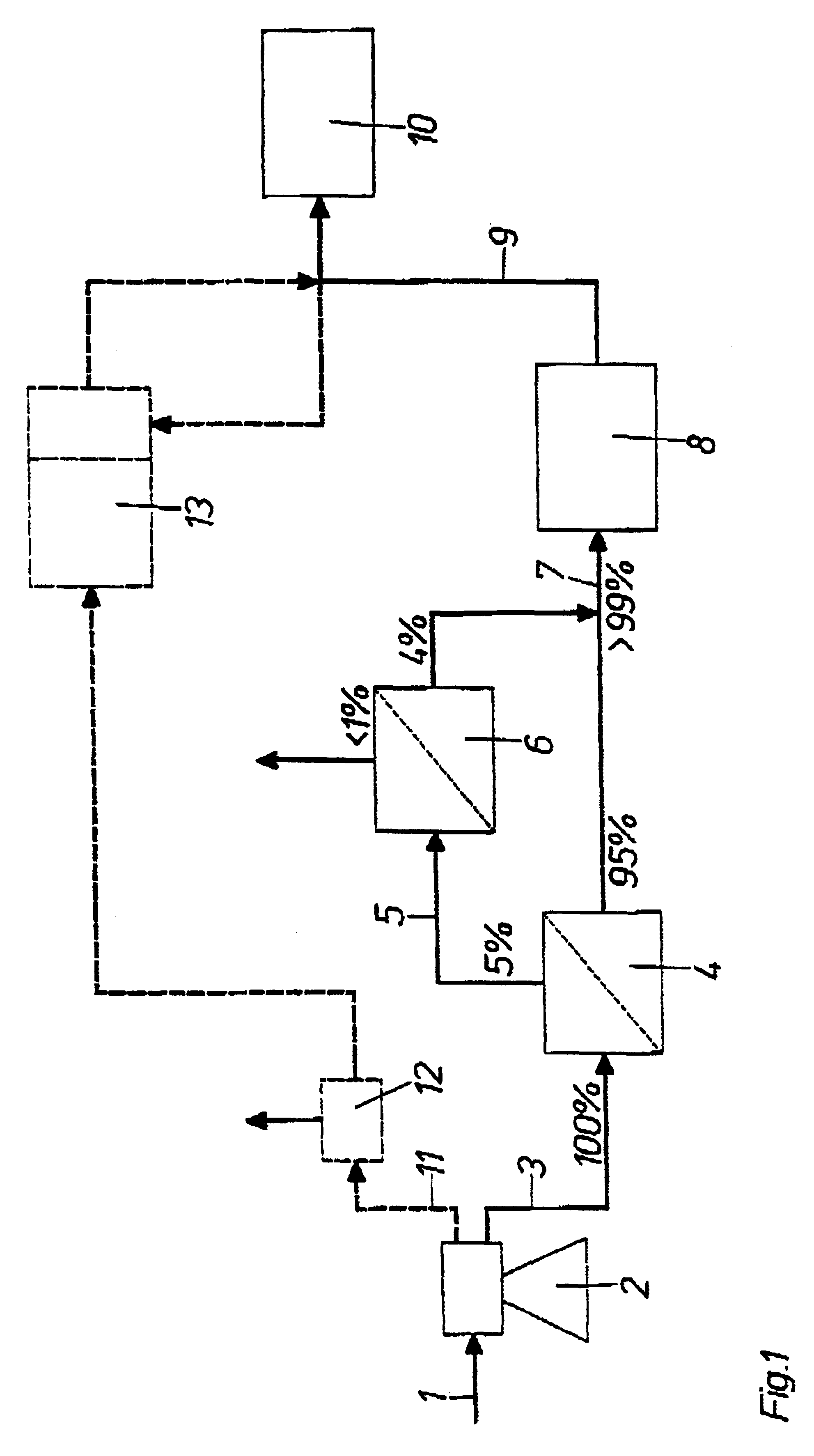Filter apparatus and method for the production of sterile skimmed milk
a filter apparatus and filter technology, applied in the field of sterile skimmed milk filter apparatus and method, can solve the problems of long shelf life at room temperature, and high temperature imparting milk ac cooked flavour, and achieve the effect of improving flavour properties
- Summary
- Abstract
- Description
- Claims
- Application Information
AI Technical Summary
Benefits of technology
Problems solved by technology
Method used
Image
Examples
Embodiment Construction
The raw milk which enters the dairy through a conduit 1 is separated at a temperature of 4-60.degree.C. A common temperature in separation in a conventional separator 2 is 55.degree.C. In the separator 2, the milk is divided up into a cream fraction and a skimmed milk fraction. The skimmed milk has a fat content of approx. 0.05-0.15%. The cream fraction is treated separately, as will be described in greater detail below, and the present invention relates essentially to the skimmed milk fraction.
In a conduit 3, the skimmed milk is led from the separator 2 to a first microfilter 4. The microfiltration takes place most effectively if the milk is at a temperature of approx. 50.degree.C. The microfilter 4 may, for example, be made of ceramics. In the microfilter 4, the skimmed milk fraction is divided into a permeate flow and a retentate flow.
In a first embodiment, the microfilter 4 has an effective pore size of 0.5 .mu.m, i.e. the filter 4 should be capable of effectively separating fro...
PUM
 Login to View More
Login to View More Abstract
Description
Claims
Application Information
 Login to View More
Login to View More - R&D
- Intellectual Property
- Life Sciences
- Materials
- Tech Scout
- Unparalleled Data Quality
- Higher Quality Content
- 60% Fewer Hallucinations
Browse by: Latest US Patents, China's latest patents, Technical Efficacy Thesaurus, Application Domain, Technology Topic, Popular Technical Reports.
© 2025 PatSnap. All rights reserved.Legal|Privacy policy|Modern Slavery Act Transparency Statement|Sitemap|About US| Contact US: help@patsnap.com


